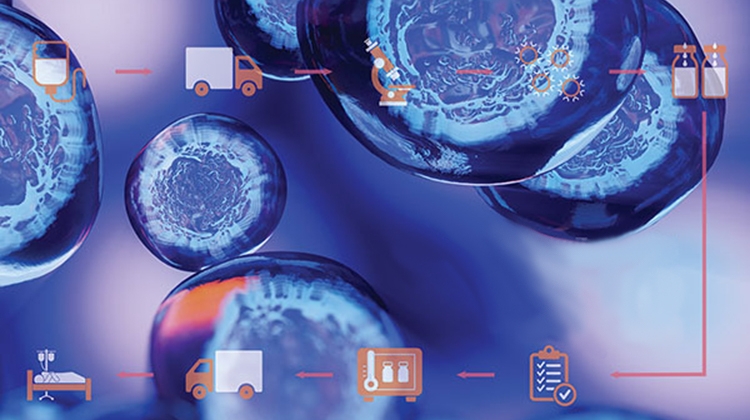What are Advanced Therapy Medicinal Products (ATMPs)?
 ATMPs are based on genes, cells, or tissues delivered to patients to provide a therapeutic benefit based on a specific target of interest. This is often referred to as personalized medicine by many. ATMPs include cells, engineered tissues, or the manipulation of the patient’s genome. This is in contrast with traditional manufacturing processes for compounds that are synthetically derived (i.e., small molecule) or proteins or peptides expressed by cellular systems (i.e., large molecule biopharmaceuticals).
ATMPs are based on genes, cells, or tissues delivered to patients to provide a therapeutic benefit based on a specific target of interest. This is often referred to as personalized medicine by many. ATMPs include cells, engineered tissues, or the manipulation of the patient’s genome. This is in contrast with traditional manufacturing processes for compounds that are synthetically derived (i.e., small molecule) or proteins or peptides expressed by cellular systems (i.e., large molecule biopharmaceuticals).
What are the areas of focus for ATMPs?
There are two primary focus areas for ATMPs.
The first, cell therapy products, are manipulated whole living cells, that are introduced into the patient and act at the cellular level to treat disease or injury. There are two categories of cell therapy products: Autologous: cells are derived from a single patient and returned to the same patient after in vitro manipulation and Allogeneic: cells are derived from multiple donors and the final cell therapy can be used to treat many different patients.
The second, gene therapy products, refers to a rapidly growing field of medicine in which genes are introduced into the body to treat or prevent diseases. Gene therapy active substance contains recombinant nucleic acid that will regulate, repair, replace, add, or delete a genetic sequence in the patient. Although a variety of methods can be used to deliver the genetic materials into the target cells and tissues, modified viral vectors represent one of the more common delivery routes because of their transduction efficiency for therapeutic genes.
The ISPE Guide: Advanced Therapy Medicinal Products (ATMPs) Autologous Cell Therapy acknowledges that the term ATMP is quite broad and that these are emerging therapies utilizing rapidly evolving technology and equipment. In recognition of this, the new Guide focuses on autologous cell therapies while providing content that may be applicable to other types of ATMPs. Future Guide updates will address Allogeneic products and other platforms.
Why are autologous cell therapies relevant?
The rapid growing number of autologous products that are entering the pipeline is evidence to the growth potential of this therapeutic approach. The Science has promised this for years; it is now delivering on the promise, and it gives new hope and treatment options to patients that have particular rare conditions/diseases. It is a game changer.
How are ATMPs and autologous cell therapies changing the pharmaceutical industry?
The promise of “personalized medicine” that was introduced over a decade ago is now becoming a reality on a much larger scale than has been available. Rare and unique conditions can now be addressed with much less risk than has been the case with “bulk drug therapies” that target a patient population, not the individual patient with their unique immune system.
What are the main challenges associated with ATMPs and autologous cell therapies?
The product-process relationship is very different from the traditional cell culture-based approach that most people are familiar with. And because the ATMP space has its roots in the academic/hospital environment in a much smaller scale, the application of GMPs to the overall manufacturing operations is a different challenge.
What type of knowledge can be found in the ISPE Guide: Advanced Therapy Medicinal Products (ATMPs) Autologous Cell Therapy offer to people in the pharmaceutical industry?
This Guide focuses primarily on manufacturing facility development and design for autologous cell therapies for parenteral use. This Guide provides an overview of the critical aspects of ATMP facility design as well as the key relationship between current process/facility attribute alignment and how that changes in the ATMP space.
The Guide presents a solid foundation of knowledge understanding for anyone that is entering the ATMP space for the first time. The focus on the growing Autologous CT space is very timely for the market today.
Buy Now!






